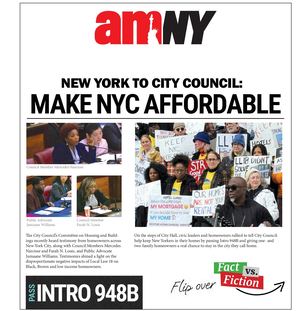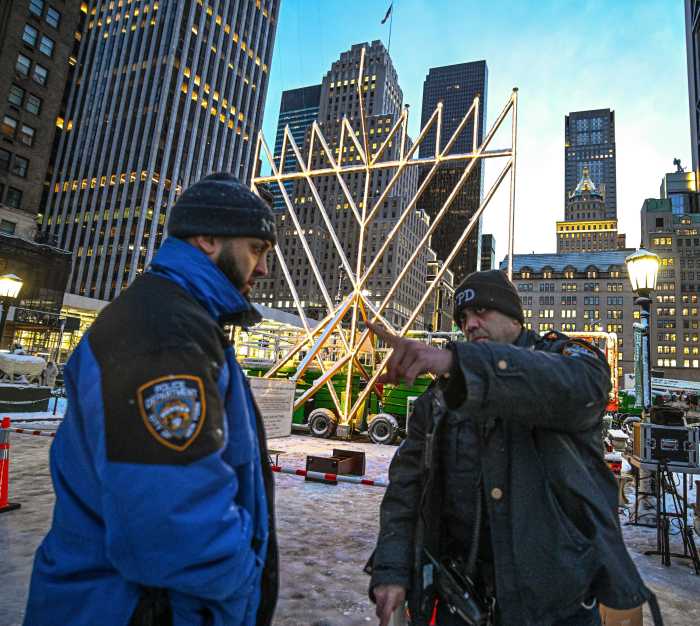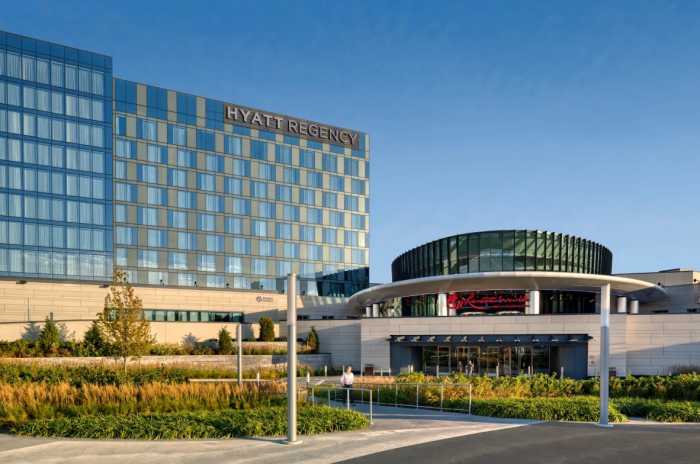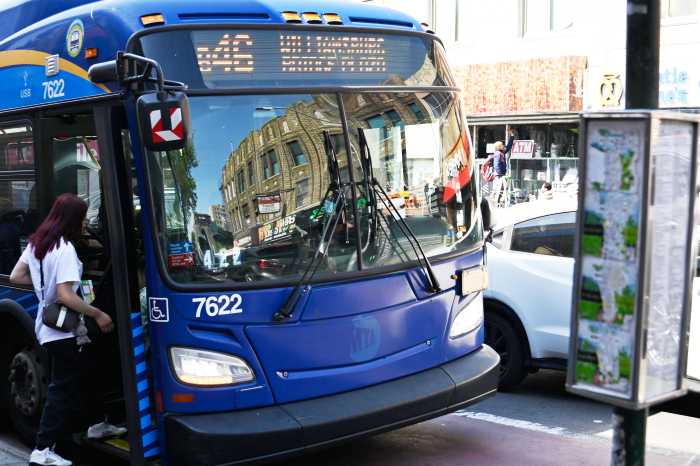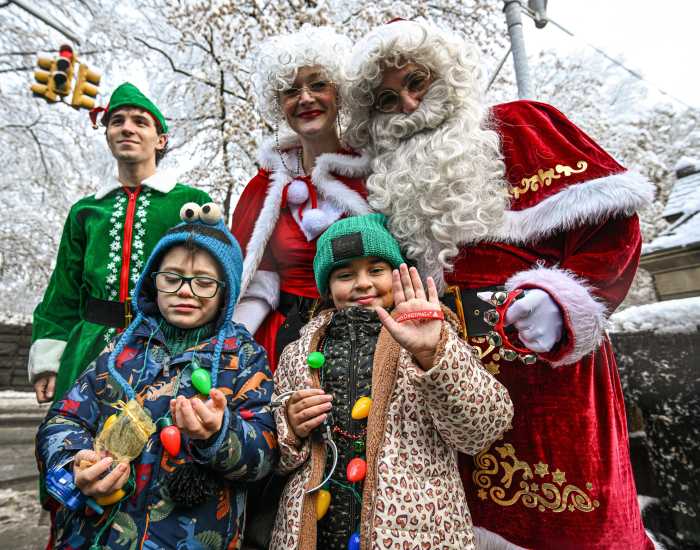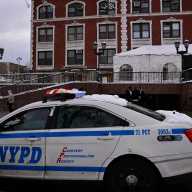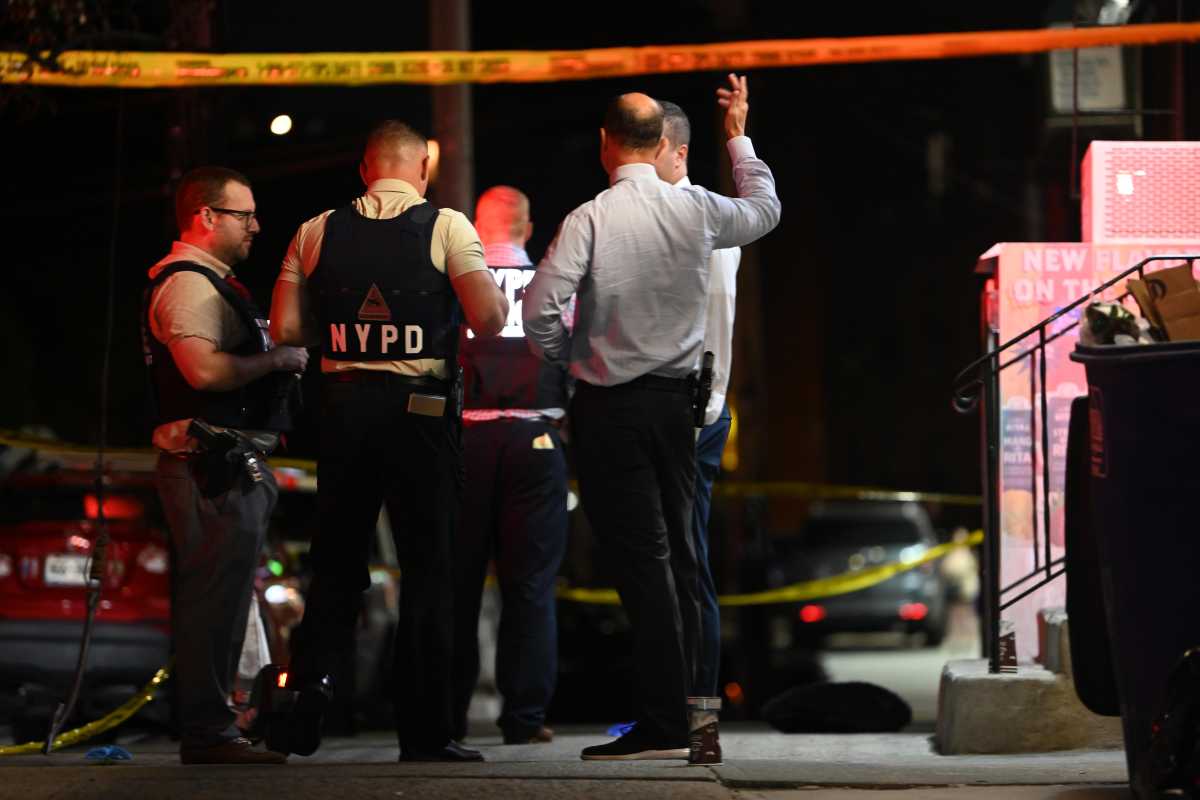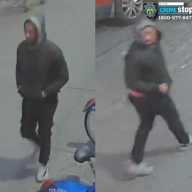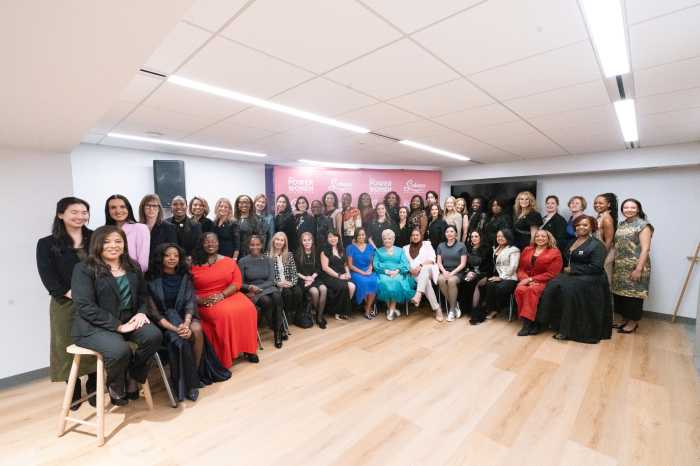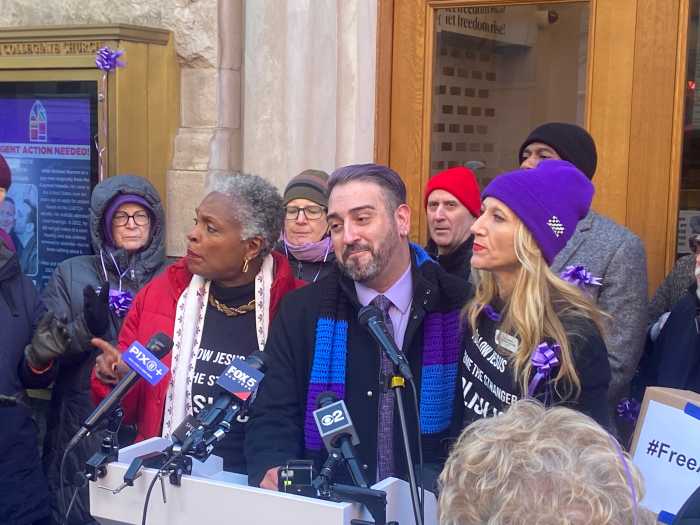
An MTA M11 bus lets passengers off in the street while a vehicle blocks its stop, at 34th St. and 10th Ave.
BY ZACH WILLIAMS | Within the rush-hour fury of ‘Busageddon’ near the Port Authority Bus Terminal, one city bus line reflects both the best and the worst of efforts to tame traffic congestion in Hell’s Kitchen.
The MTA’s M11 is hard to spot amidst the thousands of daily buses moving between the terminal and the Lincoln Tunnel. At the macro-level, the humble bus line hardly assumes a conspicuous role within discussions among activists, residents, bureaucrats and politicians aimed at addressing the overall problem. Nonetheless, transit activists promote the M11 as an example of the costs locals pay for the thousands of commuters who move through this gateway to New Jersey.
NJ Transit (NJT) buses regularly block M11 bus stops along 10th Ave. between 34th and 44th Sts. Sometimes passengers come and go when the M11 stops in a center lane. Other times, stranded prospective passengers can see through the windows of the idling NJ Transit vehicles that their trip to the Upper West Side passed them by.
“I’ve been taking the M11 for quite some time, and what I would say at this stop there is always a problem due to the fact that you have the Lincoln Tunnel traffic. S o as far as reliability and time it can be iffy at times,” said Shelia Mims, an MTA employee waiting at W. 34th St. and 10th Ave. for the bus.
M11 buses were on time recently when Chelsea Now came for rides — but some riders report wait times in excess of an hour. Summer heat and lack of cover don’t help, riders said. Overall, the M11’s 80.5 percent on-time rate in Aug. 2014 thus far falls just a half percent short of eligibility for the “Schleppie” award given each year by the Straphangers Campaign, a project of New York Public Interest Research Group, for chronically unreliable MTA buses.
In July, the line arrived on time 79.4 percent of the time — 1.2 percent above the overall Manhattan average. Kathleen Treat, chair of the Hell’s Kitchen Neighborhood Association, said in an Aug. 14 email that she often gets off the M11 at 34th and 10th Ave., knowing she will arrive home faster by walking.
“So many people here depend on the M11 — elderly folks who cannot manage the subway stairs and disabled folks like my husband who rely on the bus to ‘kneel’ to accept his wheelchair,” she wrote. “The 10th Ave. wait to get Uptown is maddening.”
New development and a growing volume of interstate buses in the neighborhood further exacerbate the situation, according to Community Board 4 (CB4) Chair Christine Berthet, who is also a co-founder of transit advocacy group Clinton Hell’s Kitchen Coalition for Pedestrian Safety (CHEKPEDS). Major intersections Uptown comprise much of the problem, she added.
“Because of the congestion the buses are unreliable and the riders choose other means, thus the ridership declines and the MTA, instead of figuring what is the problem, just reduces the frequency,” she wrote in an Aug. 19 email to Chelsea Now.
MTA records indicate that M11 ridership fell about 12 percent in between 2008 and 2013 (when 12,404 passengers rode the line). According to an agency spokesperson, buses skip a stop due to rush-hour traffic at Ninth Ave. and W. 39th St., per a city Department of Transportation (DOT) request. No such measures have been taken on 10th Ave., according to MTA — though it often skips a stop as well, as seen in Chelsea Now.

Improvements to Ninth Ave. include a designated bus lane during peak hours, but more enforcement is necessary to prevent abuse, say activists.
Transit pressures in the neighborhood should result in all available bus stops being used, according to Andrea Bernard, an interim board member at Hudson Yards/Hell’s Kitchen Alliance. She said she often has to walk to W. 42nd St. in order to catch the M11. Having “at least one solid bus that didn’t skip over stops” would greatly benefit all residents, especially the disabled, she added.
“The resources are limited for the west side transportation so it would be good to have all the stops used,” She said.
But efforts to reach out to NJ Transit, the transit company that routinely blocks M11 stops, have thus far fallen short. They have yet to respond to CB4 requests for a meeting. In an email to Chelsea Now, an NJT representative said responsibility for keeping the agency’s buses from the bus stops rests with NYPD.
MIXED SUCCESS AMIDST GRIDLOCK
Identifying the litany of relevant government agencies involved in Hell’s Kitchen traffic can be just as imposing as the problems themselves.
There are city agencies such as the DOT, NYPD and MTA. State agencies like NJT and the Port Authority of New York and New Jersey (PA) are major players, but they can range from grassroots groups like CHEKPEDS to the federal government. Cooperation among these groups as well as CB4 is crucial in arriving at both long and short-term solutions, representatives of NJT, MTA, DOT and CB4 told Chelsea Now.
Expanding the Port Authority Bus Terminal will take years. A new tunnel idea fell through when New Jersey Gov. Chris Christie channeled funds elsewhere resulting in a legal and political fight with the federal government, which had provided the funds. Extending the 7 subway line across the Hudson will not happen any time soon (if ever). These are all proposed top-down solutions to the overall problem: getting commuters through the Lincoln Tunnel with as little collateral traffic as possible.
In the meantime, bottom-up mitigation efforts are seeing some success in altering Ninth Ave. to be more pedestrian-friendly as well as a tad smoother for bus riders. A dedicated bus lane stretches from 41st to 44th Sts. Further improvements are underway, according to the DOT.
The department released a report in April (Hell’s Kitchen/Clinton Neighborhood Traffic Study) outlining numerous ways through which buses can be better shepherded between the tunnel and bus terminal while also boosting pedestrian comfort and safety.
According to Berthet, the study arose after a request by CHEKPEDS which was sponsoring a “Ninth Ave. renaissance community drive vision” which advocated a rapid transit lane on the thoroughfare.
The study is contemplating a better balance of traffic between the avenues, a better use of certain routes for buses,” Berthet said in the email. “This will eventually result in lesser congestion on Ninth Ave.” A planned Port Authority bus annex expansion on W. 39th St. (btw. 10th & 11th Aves.) will further ease congestion by accommodating an additional 100 buses and 30,000 daily passengers.
In the short term, many local residents say increased police enforcement is the best shot at really speeding things along. Outreach to NYPD has resulted in periodic enforcement actions, according to transit activists.
“For a couple of weeks the traffic will be more sane, but they can’t be here 24/7,” said Linda Ashley, chair of the 44th Street Block Association and a member of CHEKPEDS.
On most days however, white-capped NYPD officers are the only present police resources managing traffic. Changes are necessary so that they can issue tickets for moving vehicles, said Ashley.
A July 28 letter from CB4 to NYPD reiterated community concerns of pedestrian safety and urged a more permanent increase in traffic enforcement compared with “a slight increase” in police presence since January.
“There remain very few infractions being issued to buses, despite the clear violations of both traffic and parking requirements,” states the letter.
A resident of Hell’s Kitchen for the past 30 years, Ashley said she has seen the neighborhood evolve from a crime-ridden industrial area to an emerging ritzy area now plagued by what Ashley and fellow CHEKPED members call ‘Busaggedon.’
Longtime riders avoid the M11 stop at W. 37th St. and 10th Ave., but one New York City visitor waited for the bus there on Aug. 21 not knowing the reputation that stop enjoys. She said her experience with the M11 and NYC public transportation has gone rather well since arriving from San Francisco.
“Oh my good, it’s the best,” said Navid Armstrong as the M11 arrived on time — though barely visible amidst the NJ Transit buses poised to slow down the line championed by locals.
